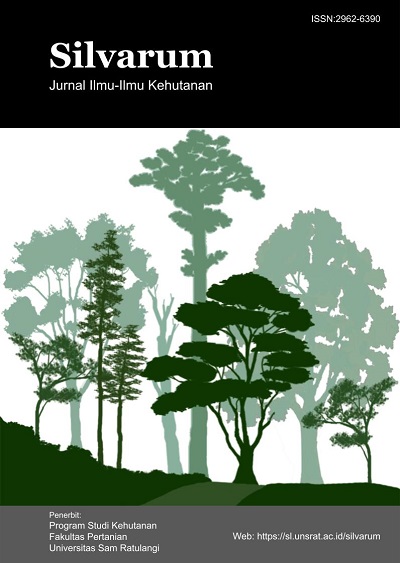Distribusi Hujan Pada Pohon Nantu (Palaquium Sp.), Pala (Myristica fragrans), Cengkeh (Syzygium aromaticum) di Desa Warembungan, Kab. Minahasa
DOI:
https://doi.org/10.35791/sil.v3i2.49759Abstract
Interception is the process when rainwater falls on the surface of the vegetation above the ground, is held for a while, and is then evaporated back into the atmosphere or absorbed by the vegetation. There are two types of components that make up rainwater intercept by plants, namely stem flow and throughfall. This study aims to measure the value of rain intercept, canopy escape, and stem flow of nantu, nutmeg, and clove trees in the plantation area of Waremungan Village, Kec. Pineleng, Kab. Minahasa. The method used in this research is quantitative comparative by comparing the differences in the observations. The study used 3 (three) species, namely nantu, nutmeg, and clove trees with each repeated 5 (five) times so that 15 (fifteen) experimental units were obtained with an observation period of 10 (ten) times then processed using t-value analysis. The results showed that the distribution of rainfall in terms of intercept, stem flow, and crown escape on clove, nutmeg, and nantu trees was not significantly different.
Downloads
Published
License
Copyright (c) 2024 Hagi Sapan, Johan Rombang, Josephus Kalangi

This work is licensed under a Creative Commons Attribution-NonCommercial 4.0 International License.
Authors published with Silvarum agree to the following terms: Authors retain copyright and grant the journal the right of first publication with the work simultaneously licensed under a Creative Commons Attribution - Share Alike License (CC BY-SA 4.0) that allows others to share the work with an acknowledgment of the work's authorship and initial publication in this journal.










